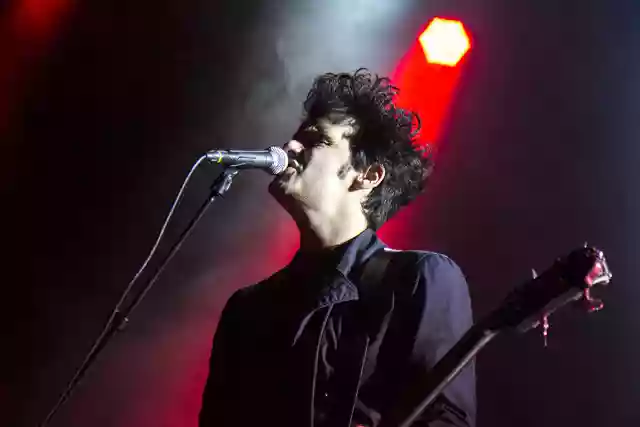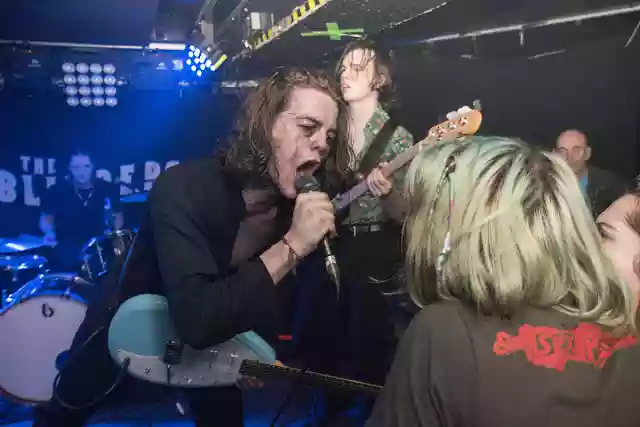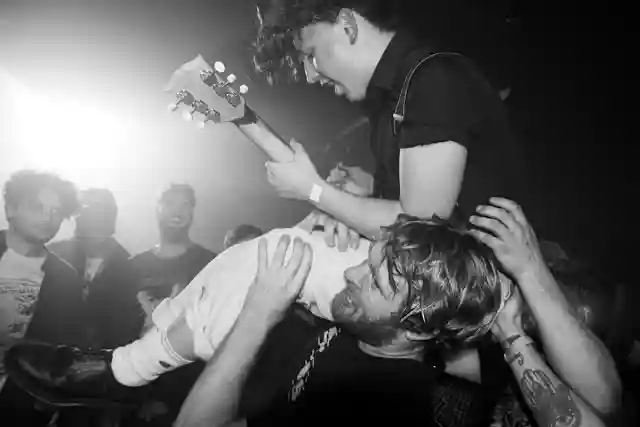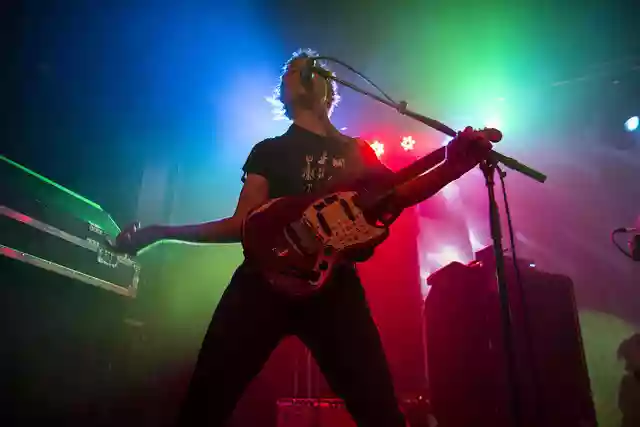- Call us: 01444 237070
- Contact Us
- Stores
- Sign In / Register
-
- Back
- Used Cameras
- Used Lenses
- Used Video
- Used Film Equipment
- Used Stock Alert
- Used Accessories
- Recently Added Used Equipment
- Used Clearance
- Faulty
- Park Picks
- Sell or Part Exchange
- Trade-In
- Blog
- New in
- Call us
- Contact us
- Stores
- Sign in
- Categories
- Tips & Inspiration
- Reviews
- News
- Events
- Features
- Buying Guides
- Competitions
How to get into concert and live music photography
Dream of taking photos of the biggest bands? Find out how to get into live music & concert photography, gig etiquette and what you will be allowed to shoot
Our two-part guide gives you the inside guide on live music and concert photography. Mastering low light photography can be hard, but the results are rewarding.
Part one of our guide answers the question 'how do I start taking live music photos?' If you want to go from being in the crowd to the photographer's pit, taking amazing band photos, our guide shows you how to get ahead in concert photography. Part two covers which kit to use and recommended settings.

How to become a music photographer
Work for a publication
To gain access to most gigs you generally need to be on the guestlist. To do this you will need to contact the promoters, who generally have a few spaces set aside for local press. First port of call is to check the facebook event / sales page of tickets where they may list the promoter.
Naturally, they tend to only dish out press /photo passes if they get something in return – normally a preview or review of the concert by the magazine/blog you represent.
So – check out local magazines, fanzines and listing guides to see if they are looking for any photographers. Being pro-active is key here - these sort of publications rarely advertise jobs.
Another way is to tread your own path and create your own blog - this shows you are passionate and pro-active. Even if this doesn't land you the press passes straight away, it's more likely to land you the role for more established magazines or blogs.

Shoot directly for the band & at smaller venues.
The other way in is to be on the bands' guestlist. Being realistic, this will be at a local scale initially, unless of course, you are well connected in musical circles. Social media 'musician groups' (such as 'Brighton Bands & Musicians') are a good way to start networking.
Networking can be key to building momentum, and simply attending gigs and speaking to bands after they have played can get you gigs. It's also a great way to venture out into PR shots.
A word of warning - this approach is really suggested as a way you can start your adventure as a live music photographer. This method is great way to build your portfolio, but obviously limits the number of gigs you can shoot. If the band head to Europe, it's a great chance to capture some 'on the road' style music documentary photos.
Once your portfolio has grown, you'll be better placed to start working for a publication. If you don't have contacts with bands, scope out which smaller venues will let you take your camera in and shoot anyway. This will let you practise, build your portfolio, and is a great opportunity to start networking with the bands you are shooting.

‘What is it like to take photos at a concert?’
For larger venues you can generally expect to be in the photographer's pit, first 3 songs only, with no flash allowed.
Even then sometimes there will be restrictions. Morrisey didn’t allow any photographer within 20 yards from the centre of the stage (even in the pit), while Burt Bacharach at Brighton Dome only allowed shots to be taken from the back of a venue - meaning that even a 70-200mm had barely enough reach.
Smaller venues may not have the restriction on numbers of songs, or the flash, and there’s unlikely to be a pit – so it’s handy to master the art of 'politely' getting to the front! Without a barrier between yourself and the crowd, it's fair to say that live music photography requires a somewhat 'robust approach'.
Personally, I'm normally half-dancing with camera in hand anyway (between shots) - it's certainly handy to have the crowd on your side...

Be aware of your surroundings – gig etiquette
In these cases ‘gig etiquette’ should be considered – gig photography is a fine line between being there to document the show and get that great picture, balanced against awareness of your surroundings.
I’ve climbed on top of tables, bouncing flash off the ceiling at certain gigs – but I’ve also had the sense to stop shooting during quiet piano solos when all I can hear is my shutter going off.
Either way, avoid stand at the front, using a flash in the singers’ face for the whole show, as you’ll disrupt the gig for both the band and audience. There are also unwritten codes for how to interact with other photographers - the 'photographer's dance' is a classic - ensuring you move around so everyone gets to shoot new angles, without walking into their frame / shot.
Less-established bands may be more receptive to backstage / after-show pics, and they are a great way to distinguish yourself on social media, and offers something unique that the band may want to share themselves.

So, that's part one covered - how to get your photopass and some basic live music photography etiquette.
Part two of our guide on live music and concert photography covers:
- why is live music photography an art?
- what to look for in a camera
- what to look for in a lens
- What settings to use

About music photographer Ashley Laurence
Ashley has been taking concert photos for Brighton Source magazine since 2013, photographing artists such as Liam Gallagher, Idles and The Libertines, through to underground indie bands like The Blinders and numerous local artists, developing an intimate knowledge of Brighton music venues’ lighting systems along the way!
The most rewarding part? Nailing those sharp, colourful images of your heroes and rising stars
See more of Ashley's work. Images originally shot for Brighton Source.
Dream kit:
Canon EOS R, Canon EF 50mm f1.4, Canon 28-70mm f/2, Canon EF 70-200 f/2.8
or
Sony a9, Sony 24-70mm f/2.8 GM, Sony 50mm f1.4, Sony FE 70-200 f/2.8
Share this post:
By Park Cameras on 24/10/2018

Trade in your old equipment
Fast and easy trade in service ensures your old gear is collected efficiently and you are paid quickly! It's very simple to trade in your unwanted photography gear. Just head over to our dedicated Sell or Part Exchange page, fill out the details, and we'll get back to you with an offer for your old gear. Take the cash, or put it towards the cost of your new gear. It's up to you! Find out more
sign up to the newsletter
Keep up to date on the latest photography news, events and offers. Sign up now
